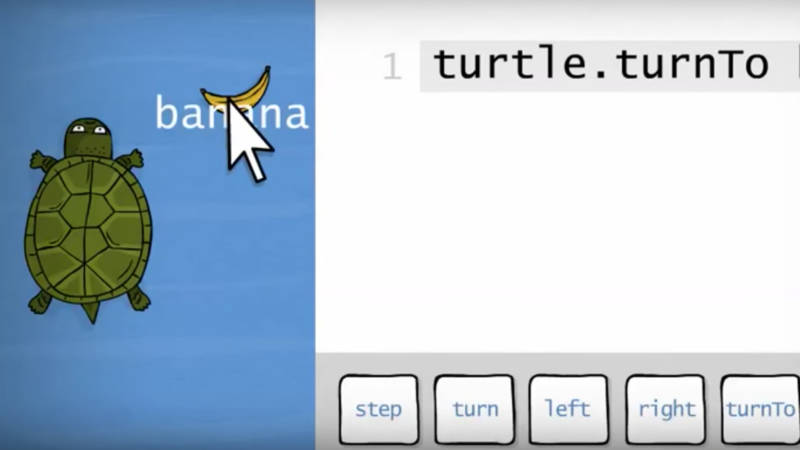Cork The Volcano -- Puzzlets
For many early learners, it can be useful to supplement digital coding and interaction with physical, hands-on activity. Cork the Volcano, an app for the Puzzlets platform, uses a similar, but stripped-down, visual block system like Scratch, and focuses on puzzle solving rather than creation. Kids sequence physical blocks on a game board in front of them that causes things to move and behave in the puzzle game. It can be an effective way to jumpstart interest in programmatic thinking for those kids that love problem solving.
Crossing the chasm
Tools that move kids elegantly toward writing actual code and learning languages and syntax while still providing engaging contexts.
GameMaker: Studio
For Scratch users, GameMaker provides a nice next step. It still has the drag-and-drop elements of Scratch as well as the all-in-one experience of design, art asset creation, and coding, but introduces much more fine-tuned control and incredible depth. GameMaker will level-up along with kids’ sensibilities, allowing them to more fully realize the types of games they envision.
CodeMonkey
If GameMaker is a bit too much, CodeMonkey is a nice option for easing into more complex platforms. Like Puzzlets, CodeMonkey uses problem solving to motivate curious kids. Unlike Puzzlets, however, CodeMonkey is entirely digital. CodeMonkey also leaps across the chasm, introducing kids to written scripting using CoffeScript, a great introductory language that’ll help kids learn syntax.
Harnessing interests
Tools that expand the horizons to what code can do, showing kids how code can be useful no matter their interests and background.
Google CS First
More curriculum than tool, Google CS First provides instructional support for kids in grades 4-8 to learn actual coding. The key with CS First, though, is that it allows kids to choose from a set of varied interests (everything from fashion to sports to music), and then uses those topics to drive coding projects. There are also grab-and-go resources for educators to start up clubs in their schools or communities.
Vidcode
From Instagram to Snapchat to Facebook, just about every teen uses some kind of social media. Vidcode uses the established grammar of social media -- filters, memes, and animation -- as an irresistible context for creative JavaScript coding projects that are genuinely fun and relevant to teens. Paid upgrades also add advanced tutorials as well as curriculum and lesson plans educators can use to get whole classes up and running.
Of course, there’s much more out there. We’ve got Top Picks lists featuring many more tools over on Common Sense Education for elementary, middle school, and high school you can check out. And don’t get me wrong; I’m not arguing that these tools solve the problem of computer science for all (after all, I’ve only focused on coding), or that these are the only three challenges facing such an ambitious shift in K-12 education. However, if the promise of computer science for all has hope of being achieved, we need to beyond traditional curricular approaches. We need to supplement or reinvent curriculum with informal resources – the kinds of passion-driven, authentic experiences much better equipped to ignite meaningful interest.
Tanner Higgin is senior manager, education content at Common Sense Education, which helps educators find the best ed-tech tools, learn best practices for teaching with tech, and equip students with the skills they need to use technology safely and responsibly. Go to Common Sense Education for free resources, including full reviews of digital tools.


